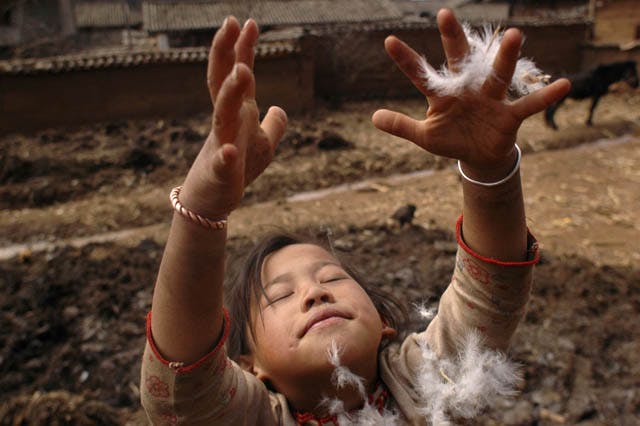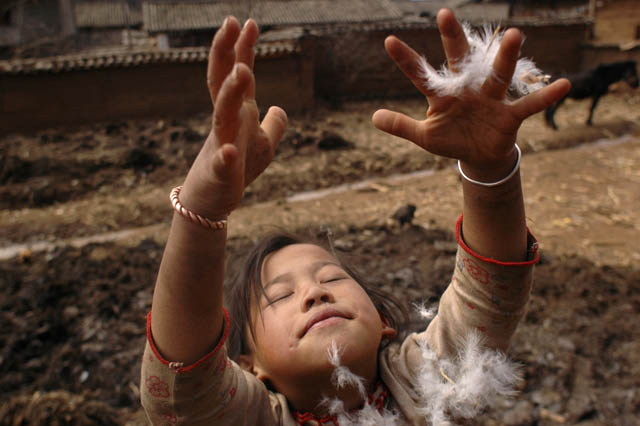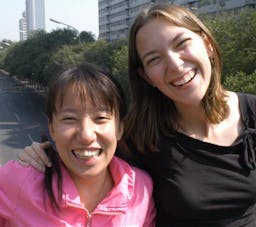Story behind the photo
Jul 12, 2020
Story


We arrived in the village of Wanchuang (Walabi) a few days before Spring Festival and the Lunar New Year festivities. My boyfriend Danny and I were volunteering with a group of foreigners from the Mosuo Cultural Development Association based in Beijing. As photojournalists we knew there would be something we could do photographically to help the organization and the Moso people.
A skinny cobble stone road leads into Walabi, past a hot springs from which it gets the name Wanchuang. A small but sturdy bridge crosses a river, the village’s only source of water. Eight-foot high walls of mud and straw line the single road and all the walkways within the village. Mountains rise on either side of the river far surpassing the two-storey school as the tallest thing around. The road turns to dirt in Walabi, snaking further into the foothills of the Himalayas.
We were greeted by a caring and curious people. Just like anyone’s grandmother, every woman made sure we had plenty to eat and that we ate often. Even the children would come searching for us if we weren’t around for lunch. Young women were amazed at my brown hair and the softness of my skin.
Walabi is a mountain village with extremes all around. The sun doesn’t rise over the mountains in January until 8 or 9am. The temperatures were below freezing at night, yet you’d break a sweat in the afternoon just walking. Years of exposure to these temperature extremes and hard manual labor in the fields is etched in every face and hand, whether 8 or 80 years old.
The Moso are a matrilineal people and engage in a rare cultural practice of “walking marriages”. Men live with their mothers and sisters, visiting their lovers in the evening and returning home by morning. Because of misconceptions of promiscuity, many villages suffered greatly through the Cultural Revolution. In modern times, the area is called "The Women's Kingdom" in Chinese and is targeted by a growing sex trade.
The MCDA is providing looms so that women can learn the trade and earn an income from the products they weave. The wooden looms sit in the courtyards of homes with the occasional chicken using one as a perch. Scarves, jackets and skirts are among the items turned out from baskets of vibrantly colored yarn.
Among the mud walls of the village stand wooden courtyard homes, some having been in the same family for over 600 years. This was the case of the family in whose home we stayed. When I mentioned to the mother that her home was older than America she laughed.
The fire represents the heart of the home and must never be extinguished. The oldest woman gets to sleep the closest to the fire, a place of honor. At each meal, portions of food are left around the ring of the fire as offerings to ancestors.
One family’s home had recently burned to the ground. Ironically it was an electrical wire that fell on the house, not the continuously burning fire inside. Although the village has no electricity, there is a large wire running over the entire length of the village taking power to distant cities.
I spent a day following Jaka Duzhelum ,the woman whose home had burned, as she cooked meals for the men who were building her new home. The entire village pitched in. Watching the men cut notches out of logs with only axes and their strength was amazing. They had four walls over seven feet tall by the end of the first day.
The next day I followed her again, photographing her daily routine. She started early in the morning tossing grain to the chickens in the courtyard. Next, the manure pile needed to be turned. The manure would be used on the fields when spring planting came. She and her twin daughters started hacking at the semi-frozen manure pile.
A neighbor girl, Atsu, came into the barnyard to play with the twins. I was perched atop the manure pile photographing Jaka swinging the pitchfork-like tool over her head into the brilliant blue sky. Chickens darted about and the water buffalo occasionally looked up in interest. We had been around for several weeks at this time and the children were all quite comfortable with us. I kept a supply of stickers in my pocket which I’m sure helped the process.
I let Atsu take a few pictures and soon she was interested in other things. She and the twins unearthed part of a white plastic beaded necklace in the manure pile. After a quick rinse in the water buffalo trough they twirled it in the air and tossed it to one another. When the newness of that wore off, Atsu came back over to me.
She had just found a clump of white duck feathers. They were the whitest object around for miles. She would toss them in the air, then try to keep them airborne by blowing upward on them. All I had to do was stand up.
A few moments later a chicken was being disemboweled. Lunch was approaching after all and Jaka and Atsu would be sure we ate.




